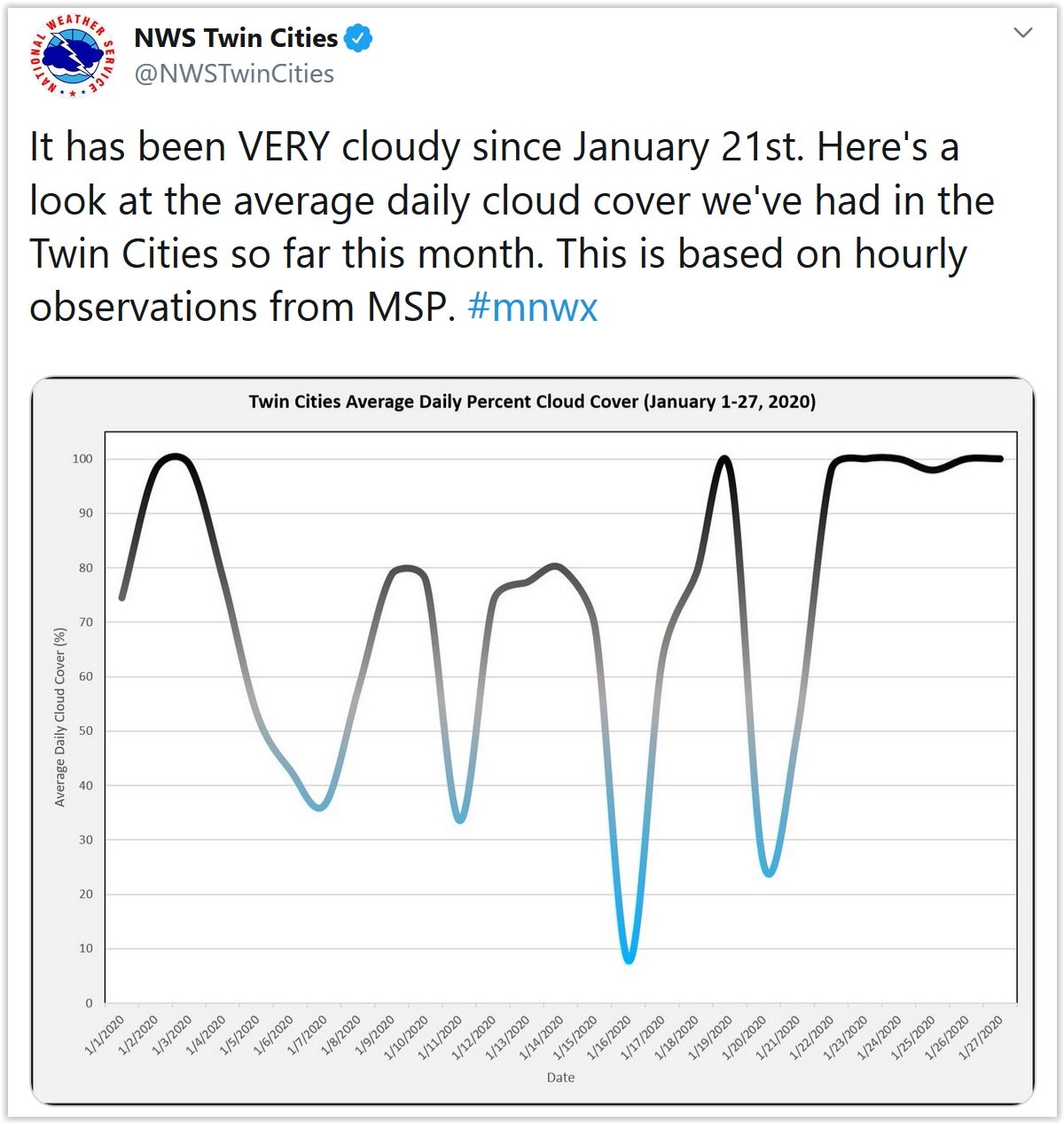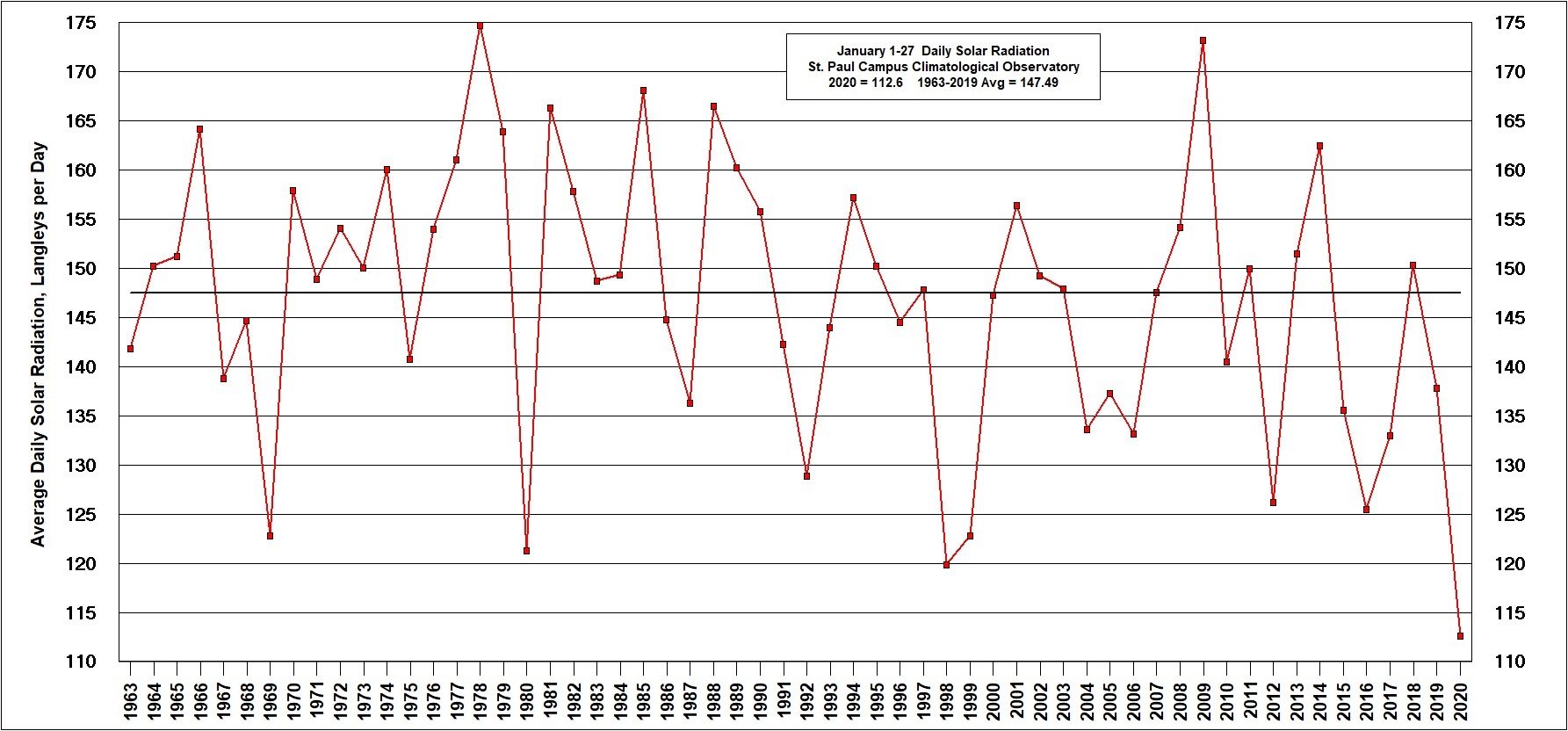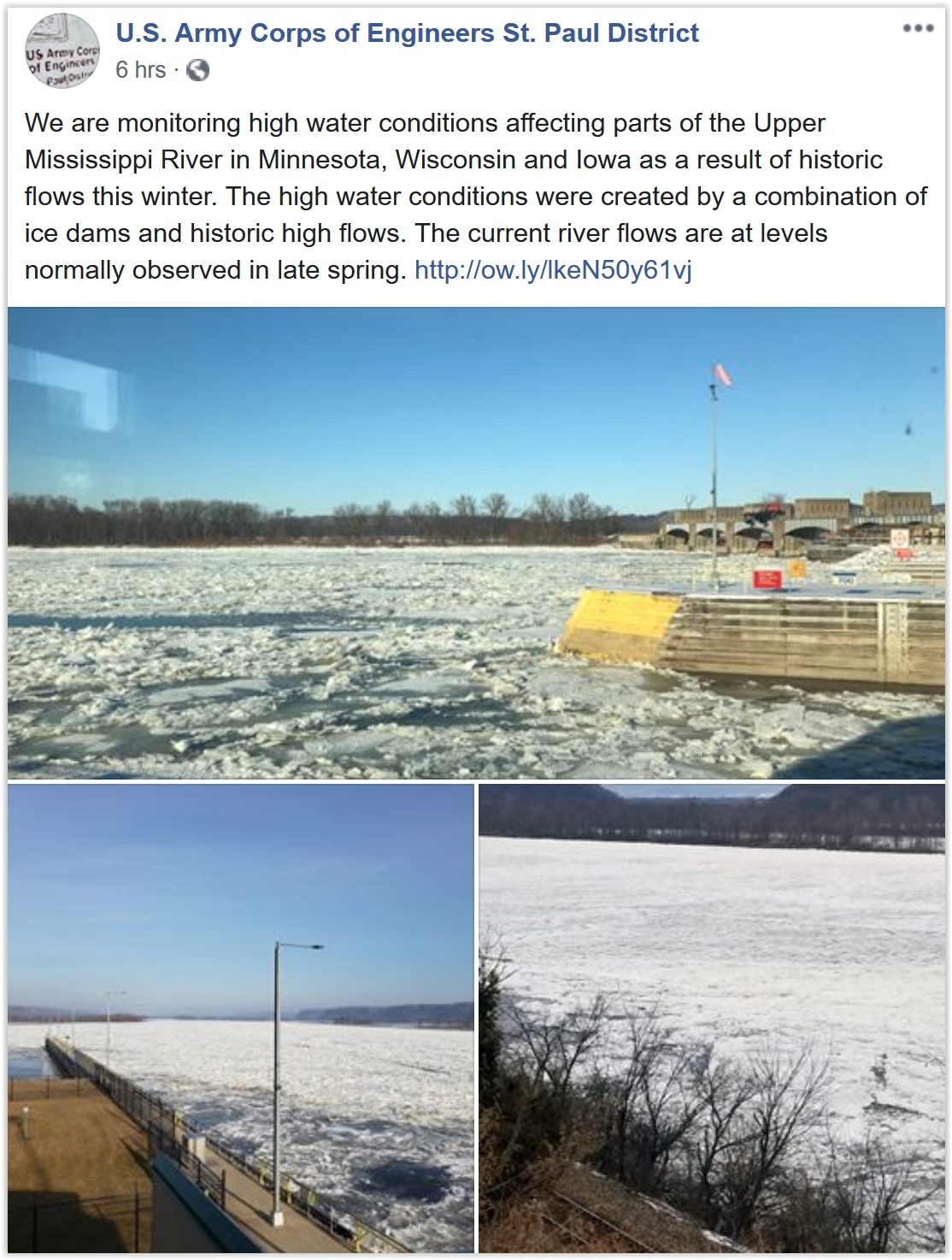Next 2-5 Days a Far Cry From Last Year
At the risk of being trite and cliche (I'm not above that) what a difference a year makes! One year ago today Minne?refresh=truesota was getting punched by the dreaded "Polar Vortex". Exactly a year ago MSP woke up to -25F, with a "high" of -1F. January 30, 2019 was the coldest day, with a seizure-inducing -28F low and a Fairbanks-friendly daytime high of -13F. Wind chills fell to 50 below as the state endured some of the
coldest readings since the 1990s.
Climate scientists tell us we'll still see cold outbreaks from time to time, but the intensity and duration of subzero cold will be a shadow of what it was as recently as the 1970s. We'll see more warm blips, fewer extended cold ruts.
Comment: The above data would suggest that 'cold ruts' are actually worsening.
Temperatures slowly mellow in the coming days, with 40s possible by Super Bowl Sunday. 7 inches of snow on the ground will act as an atmospheric brake, limiting how high the mercury can go. But February definitely starts on a mild note.
Comment: Meanwhile some parts of the US have been unusually mild leading to plants budding 2 months early.
No big storms, just a coating to an inch of flakes Friday. More of a decorative snowfall.
Gloomy January 2020
Confirming what we all suspected, here's an excerpt from The Minnesota DNR:
"So far though January 27, January 2020 has had the least amount of solar radiation for a January since solar radiation records began at the U of M St. Paul Campus Climate Observatory in 1963. January 22-28, 2020 has been cloudy for seven consecutive days. The last time there was a stretch of seven straight days of completely cloudy conditions was in October 2018. There's been longer stretches in the past. The longest record of consecutive days with zero minutes of sunshine is fifteen days from October 30, 1972 to November 13, 1972. The 1972 streak is remarkable that on November 14 there was less than an hour of sunshine, then two more days of zero minutes of sunshine! The sunshine recorder was at the Twin Cities International Airport before June 1996 and moved to Chanhassen after that. The sunshine recorder has since been discontinued.
In 1991-1992 the skies were cloudy in the Twin Cities for fourteen days in a row from December 26, 1991 to January 8, 1992. The days were marked with clouds obscuring the tops of the skyscrapers in downtown Minneapolis, drizzle and of course, copious amounts of fog. The temperature for those fourteen days ranged between 27 and 37 degrees at the Twin Cities Airport, which is very unusual for winter. Back during that streak, the chairman of Fingerhut hired a plane to take their employees on a trip above the clouds to find the sun. An odd feature during this event was an "ice fog" that would freeze and thaw on power lines, shorting them out in west central Minnesota.
Since 1906, there have been two other long stretches of general cloud cover: Oct. 31 to Nov. 15, 1922 and a comparable stretch from Nov. 15 to 28, 1944. But those times were marked by at least a partial break in the clouds.
Grand Forks Readies For What May Be a "Top Five Flood"
The Grand Forks Herald has the story; here's a clip: "...According to National Weather Service data Grasser presented to Council members on Monday, there is an approximately 80% chance that floodwaters will exceed 46 feet -- the threshold for "major" flooding -- this spring. There is a roughly 1.5% chance they'll rise above 60 feet, which is the height of the city's levee system. Those calculations were based on conditions the service recorded on Jan. 20. The fall of 2019 was a particularly wet one, and that generally indicates a wet spring. President Donald Trump granted North Dakota Gov. Doug Burgum's December request for a disaster declaration in the state. That declaration frees up Federal Emergency Management Agency funds to help cities like Grand Forks fix up infrastructure damaged by fall storms and the ensuing spring floods..."







Comment: Record cloud cover is notable because scientist Hernik Svensmark shows that with the coming solar minimum and the resulting increase in cosmic rays on Earth, more cloud cover is created resulting in more heat being reflected back into space and thus global cooling follows - and this is even before taking into account the effects of cometary and volcanic dust:
- A dark December: In one month Moscow totals 6 minutes of sunlight while Belgium bears just 10.5 hours
- France: Winter 2017-18 had the most rain and least sun
- Winter of discontent: Germany endures darkest winter in 43 years
See also: